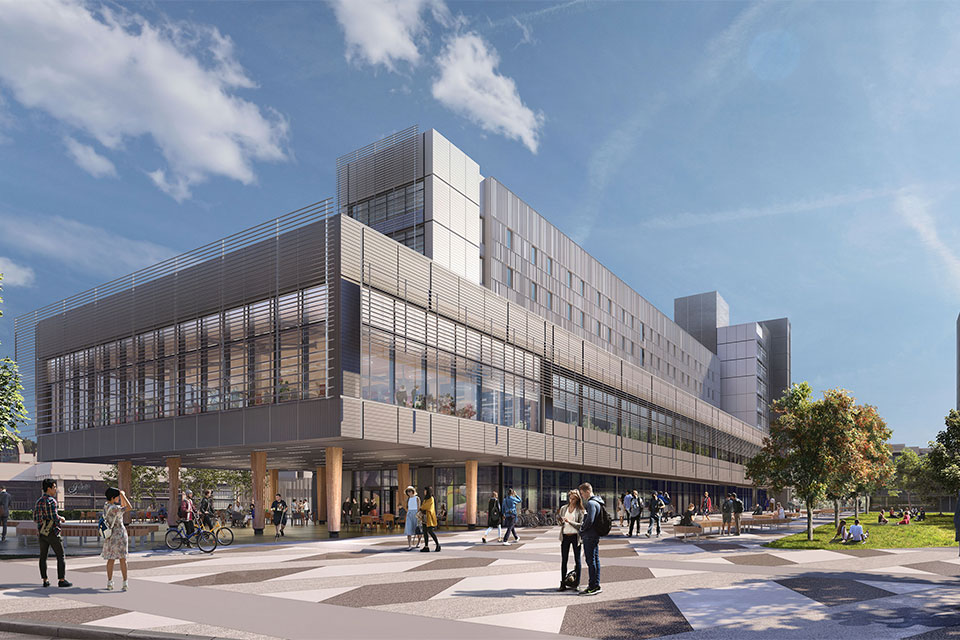Passive-energy buildings to house 621 students

On May 5, UVic offered an update on the new student housing project. The $232.4 million project, funded in collaboration with the provincial government, will house 621 students, provide retail and dining spaces, and host an Indigenous student lounge. There will also be two 225-seat lecture halls as well as meeting and conference rooms.
Although planning began in 2016, construction started in January of last year and will continue through 2023. This lines up with initial estimates for completion.
The university typically guarantees spaces in residence for first-year students. The new project will be geared towards opening up spaces for upper-level undergraduate and graduate students.
Building One is scheduled to be completed in September 2022 and will include the student dining facility as well as 398 dorm rooms. Building Two will be ready in September 2023 and will include the classrooms, conference facilities, and Indigenous student lounge as well as the rest of the student housing.
The structural framework of Building One is nearing completion with the installation of mass timber, which Mike Wilson, Director of Campus Planning and Sustainability, says will provide necessary carbon offsetting as it sucks carbon out of the atmosphere while growing and produces less carbon during construction when compared to other building materials such as concrete. Wilson said the timber was grown and harvested in B.C.
“One of the benefits of mass timber is its carbon intensity, so embodied carbon within the building, and within the structure of the building,” Wilson told the Martlet.
As part of their Strategic Framework, the university is committing to make the new facilities as environmentally friendly as possible. The university has said that both buildings will be built to LEED V4 and Passive House standards. LEED V4 is an industry-driven benchmark for green buildings. In order to meet the standards, each element of the project needs to meet emission reduction as well as health and well-being targets. Passive House, meanwhile, is an energy efficiency model that places emphasis on insulation and circulation to generate heat rather than internal air conditioning.
“Some of the things [Passive House] includes are really focusing on the building envelope and that includes insulation, so like putting on a warm winter jacket,” said Wilson. “But also looking at the details that when we start to put the skin on the building that we make sure there are’s no air gaps.”
In order to further reduce greenhouse gas emissions, rooms will be heated by recovery ventilators which use stale air to heat incoming fresh air instead of relying on the natural gas powered district power plant located on campus. Upgraded heat pumps will also provide less carbon intensive hot water systems.
Relative to the baseline year of 2010, the project aims to reduce its overall greenhouse gas emissions and natural gas consumption by 30 per cent, and campus electrical intensity by 18 per cent.
Much of the university’s emissions come from electricity usage and central heating, which is where electrical intensity comes in. Through the use of LED light bulbs and other technology that uses less electricity, the university hopes to reduce their electrical intensity and in turn their overall emissions.
Wilson also says that the design will include climate resiliency moving forward as temperatures rise over the coming decades.
“Over the long term, one of the things that we did is we worked with the [Pacific Institute for Climate Solutions],” he said. “We’ve designed these buildings to meet the future climate of 2050, providing thermal comfort through the summer months.”
The university has recently faced calls to increase the supply of student housing. Initial plans to turn the old Ducks Building downtown, owned by UVic Properties, into grad student housing were scrapped in 2019. Some students felt this was a move in the wrong direction. Students continue to have trouble finding and affording housing due to Victoria’s low vacancy rates and high rent.
Joel Lynn, Executive Director of Student Services, hopes that the new development will help students struggling to find housing. He told the Martlet that the university turns down roughly 1000 UVic residence applications annually due to a lack of capacity. With 2300 spaces in residence, this means that almost half of the applications are rejected.
“[This project will] help us get an extra 620 beds, and that’s a good step forward,” said Lynn. “And then we will start contemplating what we might move forward with in the future with housing expansion.”








